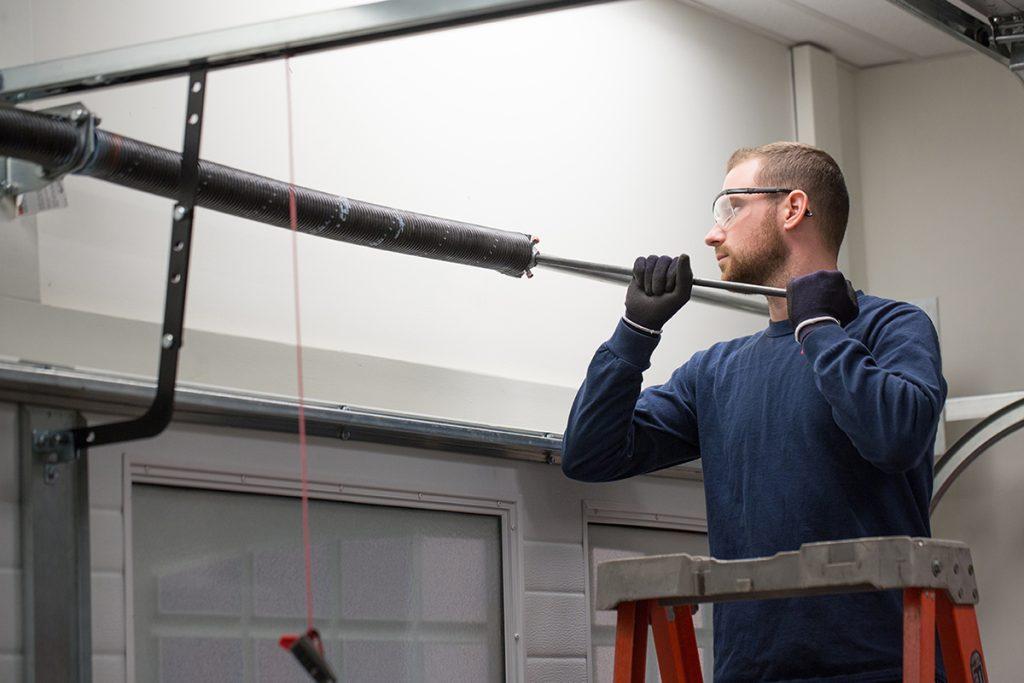Garage door springs play a vital role in the smooth operation of your garage door. They bear the weight of the door, making it easy to open and close. However, like any other component, garage door springs can break over time. In this article, we will explore the common reasons why garage door springs break and what you can do to prevent it.

The Anatomy of Garage Door Springs
Understanding the Basics
To understand why garage door springs break, it’s essential to know the two primary types of springs used in garage doors: extension springs and torsion springs.
- Extension Springs: These are typically found on one or both sides of the door and stretch as the door closes. They store energy in their extended position, helping to counterbalance the door’s weight.
- Torsion Springs: These springs are located above the garage door and wind up as the door opens. The stored energy in torsion springs helps lift and lower the door with ease.
Common Reasons for Garage Door Spring Breakage
1. Wear and Tear
Over time, garage door springs can undergo significant wear and tear due to the constant cycles of opening and closing the door. The stress and tension placed on the springs can lead to fatigue and ultimately breakage.
2. Age
Like any other component, garage door springs have a lifespan. Most springs are designed to last for a certain number of cycles, typically ranging from 10,000 to 20,000 cycles. Once they reach their maximum cycle limit, they are more likely to break.
3. Rust and Corrosion
Exposure to moisture and changing weather conditions can lead to rust and corrosion on the surface of the springs. Rust weakens the metal, making it more susceptible to breakage.
4. Poor Maintenance
Neglecting proper maintenance can accelerate the wear and tear of garage door springs. Regular lubrication and inspection can help identify issues before they lead to spring failure.
5. Improper Installation
In some cases, garage door springs break prematurely due to improper installation. If the springs are not correctly sized or adjusted, they may not distribute the door’s weight evenly, leading to excessive stress on one or both springs.
Preventing Garage Door Spring Breakage
1. Regular Maintenance
Routine maintenance is key to preventing premature garage door spring breakage. Lubricate the springs and other moving parts regularly to reduce friction and wear.
2. Professional Inspection*
Schedule periodic inspections by a professional garage door technician. They can identify signs of wear and address potential issues before they lead to spring failure.
3. Replace Both Springs*
If one garage door spring breaks, it’s advisable to replace both springs, even if the other appears to be in good condition. This ensures even distribution of weight and reduces the risk of the second spring breaking soon after the first.
4. Choose Quality Springs*
When replacing garage door springs, invest in high-quality, durable springs that are designed to withstand the specified number of cycles.
5. Consider Torsion Springs*
Torsion springs are known for their durability and longer lifespan compared to extension springs. If you have the option, consider upgrading to torsion springs.
Conclusion
Understanding why garage door springs break is essential for maintaining the functionality and safety of your garage door. By being aware of the common causes and taking preventive measures, you can extend the lifespan of your garage door springs and reduce the likelihood of unexpected breakage. Regular maintenance and professional inspections are your best allies in keeping your garage door springs in excellent working condition.



Leave a Reply